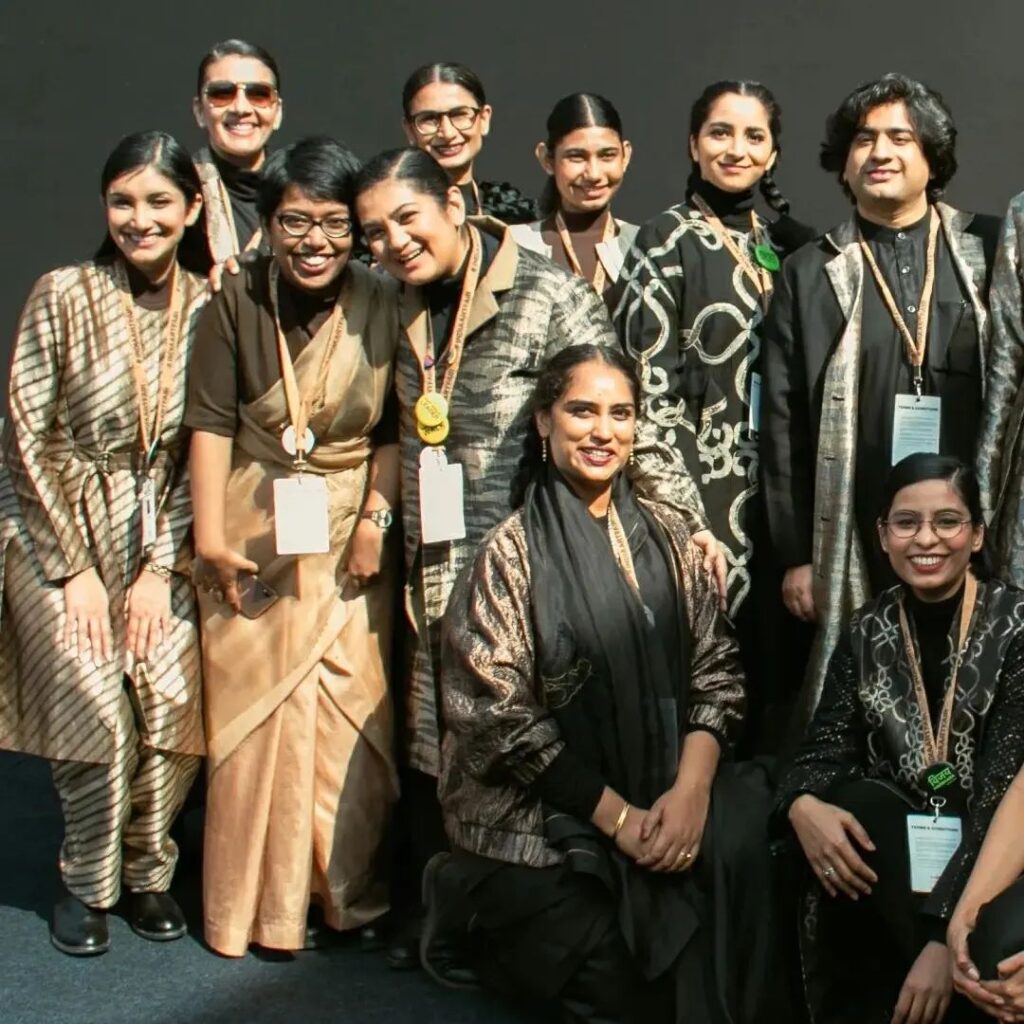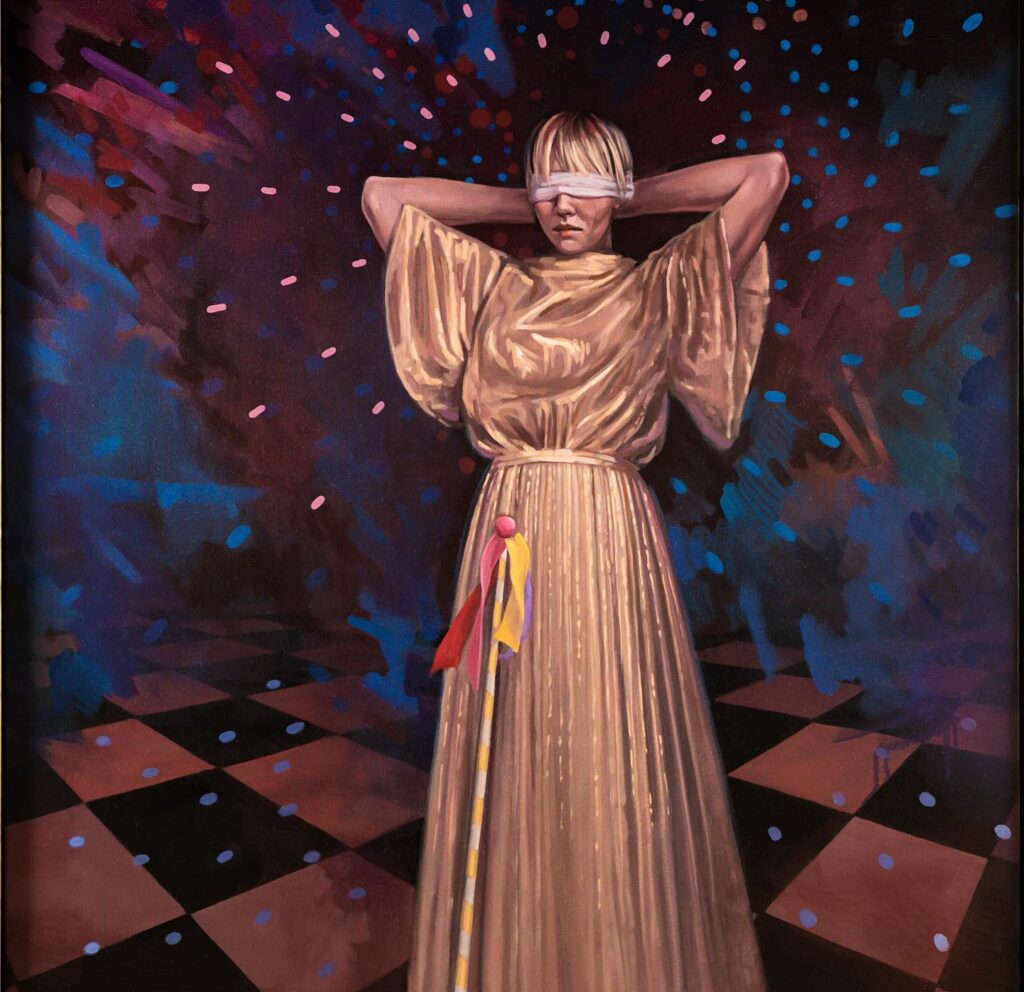

This week on Arts to Hearts Podcast, Charuka Arora interviews Shaleen Wadhwana, an art historian, curator, and arts writer.
In this episode, They delve into Shaleen’s journey into the art world, exploring her role in curating shows, organizing heritage walks, and her involvement in noteworthy projects like the British Museum archive documentary.
They also touch on the utmost importance of making art history more accessible, highlighting the need for changes in the art industry, such as fair pay and representation in history textbooks.
Shaleen brings attention to the value of balancing entrepreneurship and life as an art professional, emphasizing the significance of venturing into various roles and industries to sustain a successful career in the arts.
Currently, Shaleen is curating Camold’s highly anticipated sixtieth anniversary exhibition, which delves deep into the institution’s profound history and noteworthy impact.
Additionally, she provides insights into her role in upcoming exhibitions titled “Framing” and “Futuring,” as well as the nostalgic showcasing of “Remembering.” With unwavering enthusiasm, Shaleen encourages support for her compelling projects and warmly invites everyone to connect with her on Instagram.
Watch & Listen to this podcast Episode.
Chapters
| Timestamp | Summary |
|---|---|
| 44:00.00 | Discussion about diversifying income and being an entrepreneur |
| 45:30.95 | Challenges faced by artists in pursuing their passion |
| 46:56.30 | Encouraging young artists to take on commission work |
| 48:05.55 | The impact of technology on art production |
| 49:23.89 | Shaleen’s experience working at the British Museum |
| 50:31.82 | Shaleen’s art history degree and its impact on her career |
| 52:09.68 | The importance of having multiple skills in the art industry |
| 53:52.34 | Shaleen’s involvement in curating the Camold exhibition |
| 57:30.91 | Shaleen’s role in curating the 60th anniversary exhibition |
| 59:23.89 | The challenges and growth of being an independent professional |
About Shaleen Wadhwana
Shaleen Wadhwana, an artist, art writer, curator and experienced independent arts and heritage professional, has contributed her expertise to various renowned Indian art galleries and museums.

She holds an impressive educational background, including a Young India Fellowship from Ashoka University, India, a Bachelor’s degree in History, a Master’s degree in Art History from SOAS in London, as well as extensive knowledge in Art Appreciation from the National Museum Institute in Delhi and Cultural Heritage Law from UNESCO-University of Geneva.
Currently, Shaleen is also serving as a visiting faculty member at the prestigious MITID Institute of Design located in Pune, India.
Key Highlights From The Episode
In today’s rapidly changing world, the preservation and understanding of art history and cultural heritage have become more important than ever. These fields not only provide us with a glimpse into the past but also shape our present and future. In this thought-provoking discussion, we had the pleasure of speaking with Shaleen Wadhwana, an art historian, curator, and arts writer, who is dedicated to bringing audiences closer to South Asian art history, heritage, and culture.
We delved into various aspects of her work, including her passion for curating shows, her involvement in the British Museum archive, and her current work in the field of cultural heritage. Throughout our conversation, Shaleen shared her insights and experiences, shedding light on the challenges and opportunities in the art history and cultural heritage sectors and the art of balancing entrepreneurship and life as an art professional.
Exploring Art History and Cultural Heritage
Shaleen’s journey into the world of art history began in her school days when she was captivated by her history teacher’s vivid description of a war scene. This sparked her interest in the past and the power of art to transport us to different eras. As she pursued her studies in history, she realized that art and history were intertwined, and she wanted to explore the intersection of the two fields.
Shaleen’s self-taught artistic skills further fueled her passion for art history, and she began to see herself as a bridge between the past and the present, bringing audiences closer to South Asian art history, heritage, and culture.
The Role of Curating Shows and Heritage Walks
One of the ways Shaleen fulfills her mission of bringing audiences closer to art history and culture is through curating shows and organizing heritage walks. These initiatives allow people to engage with art and history in a more accessible and approachable manner. Shaleen explained that her heritage walks take participants to various monuments and guide them through the stories and narratives associated with these sites. By making history more relatable and tangible, she aims to demystify the subject and make it more engaging for a wider audience.

The Challenges of Art History and Cultural Heritage
While Shaleen’s work is undoubtedly rewarding, it is not without its challenges. She highlighted the lack of awareness and understanding of art history and cultural heritage in India, as well as the limited resources and opportunities available in the field. She emphasized the need for more inclusive and diverse narratives in art history and the importance of making the subject more accessible to the masses. Shaleen also discussed the financial sustainability of a career in the arts and the need for artists and professionals in the field to find innovative ways to support themselves.

The Power of Collaboration and Technology
In her work, Shaleen has collaborated with various institutions and individuals to create impactful projects that bring art history and cultural heritage to a wider audience. She shared her experience of working with Vice World News UK and Tenso Webney in India to create a tour that used augmented reality filters on Instagram to provide easily accessible information about artifacts in the British Museum. This project aimed to inform the British public about the history and context of these artifacts and spark conversations about cultural repatriation. Shaleen emphasized the importance of collaboration and the power of technology in disseminating information and engaging the masses.

The Implications and Potential Impact
The work that Shaleen and others in the field of art history and cultural heritage are doing has significant implications for society. By bringing art history and cultural heritage to the forefront, they are challenging dominant narratives and fostering a more inclusive and diverse understanding of the past. This has the potential to reshape our present and future by promoting cultural exchange, fostering empathy, and encouraging critical thinking. The projects and initiatives discussed in this conversation highlight the power of art and history to educate, inspire, and create positive change.
Overall in the episode
As we navigate the complexities of the modern world, the importance of art history and cultural heritage cannot be overstated. They provide us with a deeper understanding of our collective past and shape our present and future. The work of individuals like Shaleen Wadhwana, who are dedicated to bringing art history and cultural heritage to a wider audience, is crucial in creating a more inclusive and diverse society. By challenging dominant narratives, fostering collaboration, and utilizing technology, we can ensure that art history and cultural heritage are accessible to all. As we move forward, it is essential to continue supporting and advocating for these fields, as they play a vital role in shaping our identity and fostering cultural exchange.
In the conversation, Shaleen discussed the challenges she faces in her work, including the lack of awareness and understanding of art history and cultural heritage in India, as well as the limited resources and opportunities available in the field. She emphasized the need for more inclusive and diverse narratives in art history and the importance of making the subject more accessible to the masses. Shaleen also highlighted the financial sustainability of a career in the arts and the need for artists and professionals in the field to find innovative ways to support themselves.
Shaleen also shared her experience of collaborating with various institutions and individuals to create impactful projects that bring art history and cultural heritage to a wider audience. She discussed her work with Vice World News UK and Tenso Webney in India to create a tour that used augmented reality filters on Instagram to provide easily accessible information about artifacts in the British Museum. This project aimed to inform the British public about the history and context of these artifacts and spark conversations about cultural repatriation. Shaleen emphasized the importance of collaboration and the power of technology in disseminating information and engaging the masses.

The work that Shaleen and others in the field of art history and cultural heritage are doing has significant implications for society. By bringing art history and cultural heritage to the forefront, they are challenging dominant narratives and fostering a more inclusive and diverse understanding of the past. This has the potential to reshape our present and future by promoting cultural exchange, fostering empathy, and encouraging critical thinking.
In conclusion, the preservation and understanding of art history and cultural heritage are crucial in today’s world. The work of individuals like Shaleen Wadhwana, who are dedicated to bringing these fields to a wider audience, is essential in creating a more inclusive and diverse society. By challenging dominant narratives, fostering collaboration, and utilizing technology, we can ensure that art history and cultural heritage are accessible to all. As we move forward, it is vital to continue supporting and advocating for these fields, as they play a vital role in shaping our identity and fostering cultural exchange.
Liked what you read?
Listen to this & other episodes on


















Comments 7